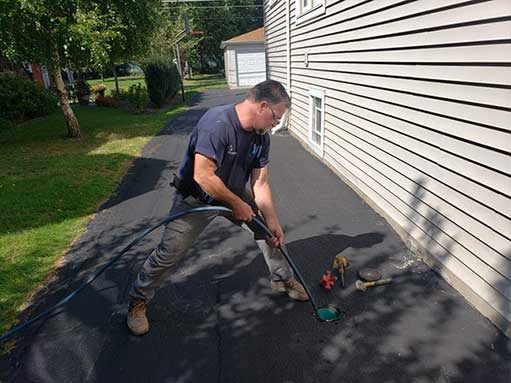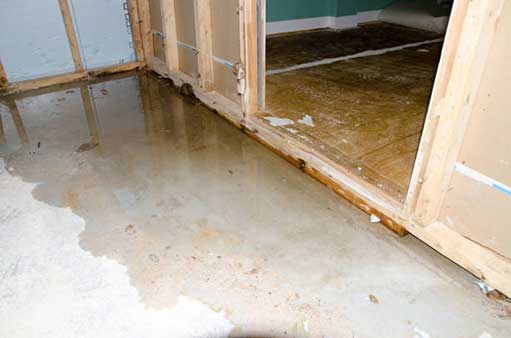Preventing Sewer Backflow: Essential Strategies for Your Home or Business
Dealing with sewer backflow can be a costly and frustrating problem for any homeowner or business owner. Sewer backflow occurs when the flow of wastewater reverses from the usual direction and flows back into your property instead of being carried away. This can lead to serious health hazards, property damage, and financial burdens.
To protect your property and maintain a clean and healthy environment, it is crucial to implement effective strategies for avoiding sewer backflow. Here we will explore the top strategies that you can employ to prevent sewer backflow in your home or business.
The Importance of Avoiding Sewer Backflow
Before we dive into the strategies, let’s understand why it is essential to prevent sewer backflow in the first place.
Health Risks: Sewer backflow can introduce harmful bacteria, viruses, and other pathogens into your property. These contaminants can pose severe health risks to you, your family, or your employees.
Property Damage: The reverse flow of wastewater can cause significant damage to your property’s infrastructure. It can lead to flooded basements, damaged walls, and ruined furniture or equipment.
Financial Burdens: Repairing the damage caused by sewer backflow can be expensive. It may involve costly repairs to your plumbing system, structural repairs, and the replacement of damaged belongings. Additionally, if your property is not adequately protected against sewer backflow, insurance claims may be denied.
Top Strategies for Avoiding Sewer Backflow
Now that we understand the importance of preventing backflow let’s explore the top strategies that can help you avoid this troublesome issue.
Install Backflow Prevention Devices
One of the most effective ways to prevent sewer backflow is by installing backflow prevention devices. These devices are designed to block the reverse flow of wastewater and keep it from entering your property. There are different types of backflow prevention devices available, including backflow valves, check valves, and gate valves. Consult with a professional plumber to determine which device is best suited for your specific needs.
Maintain Your Plumbing System
Regular maintenance of your plumbing system is crucial for preventing backflow. Ensure that your plumbing pipes are in good condition and free from any cracks or damage. Additionally, schedule periodic inspections to identify and address any potential issues before they escalate.
It is also essential to keep your drains clean and clear of any debris or blockages. Avoid flushing items down the toilet or pouring substances down the drain that can clog the pipes and increase the risk of sewer backflow.
Properly Seal Access Points
Inspect and seal any potential access points where sewer backflow can enter your property. Check for gaps or openings around utility lines, pipes, and vents. Use appropriate sealants or caulking to seal these entry points and prevent any wastewater from seeping in during heavy rainfall or sewer system overload.
Create Proper Drainage Systems
Ensure that your property has a well-designed drainage system that efficiently directs rainwater away from your building’s foundation. Improper drainage can lead to an excessive buildup of water around your property, increasing the risk of backflow. Install downspouts, gutters, and drains to divert water away from your property.

Hire professional plumbers who can use specialized equipment to inspect the sewer lines for any blockages, tree root intrusions, or other issues that may lead to sewer backflow
Implement Flood Prevention Measures
In areas prone to flooding, it is essential to install flood control systems to prevent sewer backflow. Consider installing flood sensors and alarms that can alert you in case of rising water levels. Elevating your electrical systems, appliances, and valuable belongings above the flood level can also help reduce the impact of sewer backflow during a flood event.
Educate and Train Individuals
Whether you are a homeowner or a business owner, it is crucial to educate yourself, your family members, or your employees about the risks of backflow and the preventive measures in place. Train individuals on how to respond during emergencies such as heavy rainfall or sewer system issues. Creating awareness can help minimize the damage caused by backflow and ensure everyone’s safety.
Stay Informed about Municipal Sewer System Upgrades
Stay updated on any municipal sewer system upgrades or improvements happening in your area. These upgrades are often carried out by local authorities to enhance the capacity and efficiency of the sewer system. Being aware of such upgrades can help you take proactive measures to prevent sewer backflow and adapt to any changes in the sewer system.
Regularly Inspect and Clean Sewer Lines
Periodic inspections and cleaning of your sewer lines are essential to ensure their proper functioning and prevent sewer backflow. Hire professional plumbers who can use specialized cameras to inspect the sewer lines for any blockages, tree root intrusions, or other issues that may lead to sewer backflow. Regular cleaning and hydro jetting of your sewer lines can significantly reduce the chances of experiencing sewer backflow.
Preventing backflow is crucial for maintaining a safe and healthy environment in your home or business. By implementing the strategies outlined in this article, you can significantly reduce the risk of sewer backflow and the associated health hazards, property damage, and financial burdens. Remember to consult with professionals and stay proactive in your approach to sewer backflow prevention. Taking these preventive measures will provide you with the peace of mind that your property and those within it are protected.



